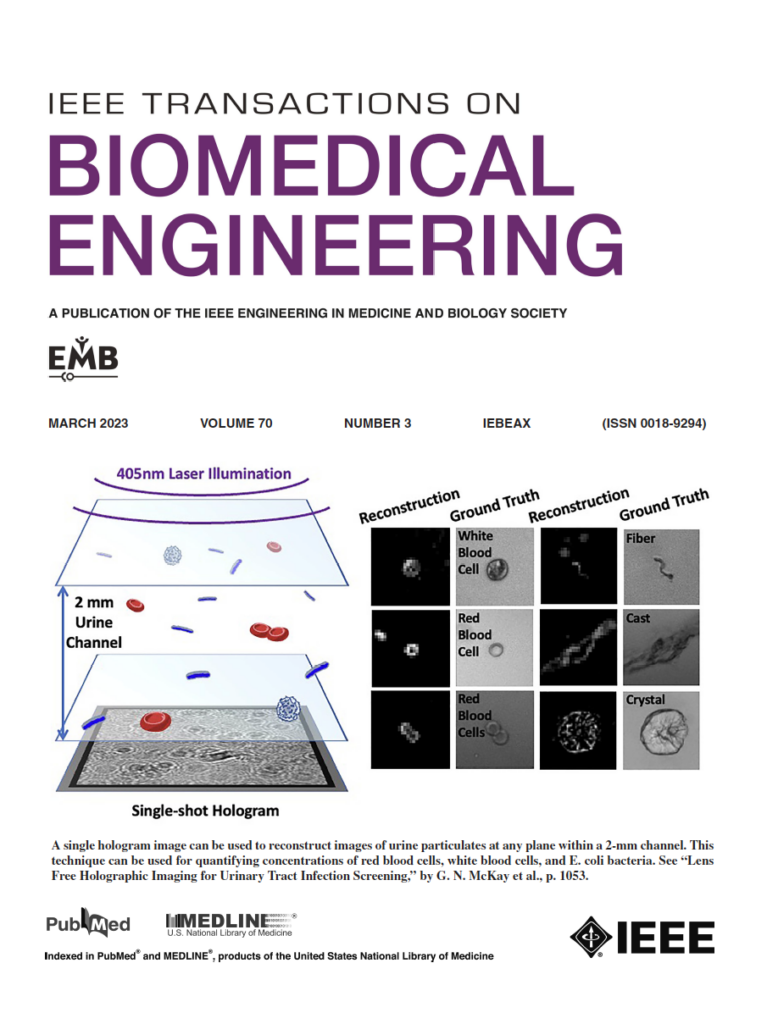Lens free holographic imaging for urinary tract infection screening
McKay GN, Oommen A, Pacheco C, Chen MT, Ray SC, Vidal R, Haeffele BD, Durr NJ.
IEEE Transactions on Biomedical Engineering 70:3 2023
[Cover Article] [Journal Link] [Preprint]
Abstract
Objective: The diagnosis of urinary tract infection (UTI) currently requires precise specimen collection, handling infectious human waste, controlled urine storage, and timely transportation to modern laboratory equipment for analysis. Here we investigate holographic lens free imaging (LFI) to show its promise for enabling automatic urine analysis at the patient bedside. Methods: We introduce an LFI system capable of resolving important urine clinical biomarkers such as red blood cells, white blood cells, crystals, and casts in 2 mm thick urine phantoms. Results: This approach is sensitive to the particulate concentrations relevant for detecting several clinical urine abnormalities such as hematuria and pyuria, linearly correlating to ground truth hemacytometer measurements with R2 = 0.9941 and R2 = 0.9973, respectively. We show that LFI can estimate E. coli concentrations of 103 to 105 cells/mL by counting individual cells, and is sensitive to concentrations of 105 cells/mL to 108 cells/mL by analyzing hologram texture. Further, LFI measurements of blood cell concentrations are relatively insensitive to changes in bacteria concentrations of over seven orders of magnitude. Lastly, LFI reveals clear differences between UTI-positive and UTI-negative urine from human patients. Conclusion: LFI is sensitive to clinically-relevant concentrations of bacteria, blood cells, and other sediment in large urine volumes. Significance: Together, these results show promise for LFI as a tool for urine screening, potentially offering early, point-of-care detection of UTI and other pathological processes.
